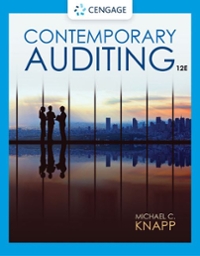Question
Bank of America was committed to the strategic use of sports sponsorships. Bednar had aligned the universal bank model/return on investment approach to evaluate the
Bank of America was committed to the strategic use of sports sponsorships. Bednar had aligned the universal bank model/return on investment approach to evaluate the benefits of a sponsorship to the bank's three lines of business. This criterion was to be used in conjunction with the assessment of the more traditional branding benefits (awareness and positive associations) generated by sponsorships for the corporate brand name. In late 2006, Ray Bednar and fellow sponsorship executives had to apply these criteria and decide: (1) whether to form a new relationship with auto racing as the Official Bank of NASCAR beginning with the 2007 season, (2) whether to renew the U.S. Olympic Team sponsorship beyond 2008, (3) whether to renew the sponsorship of the NFL Dallas Cowboys, and (4) how to exit after the 2006 Bank of America Colonial golf tournament sponsorship without jeopardizing its existing bank relationships.
Some months later, in April 2007, Bank of America agreed to purchase LaSalle Bank, headquartered in Chicago, for $21 billion. This would potentially increase Bank of America's assets by approximately 9%. With the purchase, Bank of America would expand its Chicago and Michigan presence by adding LaSalle's 17,000 commercial banking clients, 1.4 million retail customers, 400 banking centers, and 1,500 ATMs.
The acquisition meant that Ray Bednar and his colleagues were facing yet another decision regarding the corporation's strategic direction for sports sponsorships, and in particular, what to do with LaSalle Bank's sponsorships within Bank of America's current sponsorship portfolio. For instance, LaSalle Bank owned the Chicago Marathon, one of the most prestigious marathons in the world that attracted 45,000 runners and 1.5 million spectators. La Salle had sponsored this Marathon for fifteen years (with an approximate annual operating cost estimated at $ 10-15 million); what made this extraordinary was the fact that Bank of America now owned a sports property for the first time. Bednar described the situation:
It looked like we were a sponsor, but we 100% owned the event. The great challenge was that now we had to operate an event like a P&L. We had to sign sponsors on like Nike, Volkswagen, etc., and take on the risk of operating the event—a massive change for the bank. So, the question was whether or not we should continue to own and operate this significant event in the Chicago market that was so important to us, or should we consider selling it and continue as the title sponsor?
LaSalle Bank also sponsored the LaSalle Bank Open (played in Glenview, Illinois), one of the top events on the PGA's Nationwide Tour (from which the top players "graduated" to the PGA Tour) that included over 150 professional golfers ranging from up-and-comers to some seasoned PGA Tour veterans. LaSalle had owned and operated (at an approximate annual operating cost estimated at $ 1.75-3.0 million) the Open for five years, with a commitment through 2009. Among the questions confronting Bednar were whether these events should be considered "home town" sponsorships, and if so, whether that was an important consideration after the current contracts expired.
Step by Step Solution
3.27 Rating (142 Votes )
There are 3 Steps involved in it
Step: 1
Summary of Bank of Americas Sponsorship Decisions Bank of America under Ray Bednars leadership had a ...
Get Instant Access to Expert-Tailored Solutions
See step-by-step solutions with expert insights and AI powered tools for academic success
Step: 2

Step: 3

Ace Your Homework with AI
Get the answers you need in no time with our AI-driven, step-by-step assistance
Get Started


